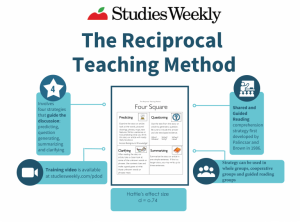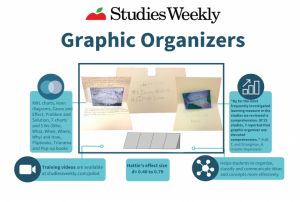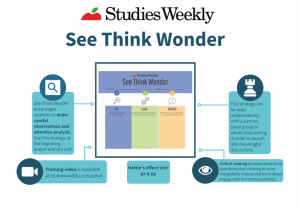Thinking on Education: Differentiated Instruction with Studies Weekly
We all want our students to succeed.
On the surface level, student success looks like solid test scores, mastery of grade-level standards, etc. But in life, tests and standards are not the only ways to define success. And just as each student’s path to career success will look very different, there are various paths students can take to learning success.
That’s where differentiated instruction comes in.
“Differentiated instruction honors students’ diverse backgrounds and learning styles. With differentiation, teachers recognize their students as individuals with varying needs and provide them with more options for learning. In other words, teachers use multiple strategies to make sure that all students can absorb the information being taught, share what they’ve learned, and meet long- and short-term goals,” the staff at We Are Teachers said in a January 2018 article.
For many classroom teachers, though, it seems like a lot of work to implement differentiated instruction. Teachers feel overwhelmed with different lesson plans for the same topic, varied content delivery processes and projects.
But it doesn’t have to be, according to veteran teacher Larry Ferlazzo. He explained in a February 2019 Education Week video that it is more a “way of thinking, not a list of pre-planned strategies.”
When teachers develop a growth mindset and zero in on the main learning objectives for a unit or subject, they realize there can be multiple ways to get to that goal.
Ferlazzo shared an example of teaching students the argumentative essay. He’d chosen a topic for the students to research and write about. But he realized one student was completely disengaged. Once he gave the student an alternate topic option, the student immersed himself in the topic and wrote a strong essay.
Studies Weekly recognizes there are many ways to learn. That’s why our products already have research-backed differentiated learning strategies built right in. Even better, these strategies don’t require hours of extra teacher preparation.
Our differentiated learning strategies are based on the Hattie’s Effect — a research study by New Zealand professor John Hattie that showed the effectiveness of certain teaching methods. The best ones hit the .40 to 1.2 mark on scale of -.2 to 1.2.

Studies Weekly includes seven of these high-impact strategies, in addition to many others.
Reciprocal Teaching Method (Hattie’s Effect .74)
Inquiry Model (Hattie’s Effect .40)
Question Formulation Technique (HE .66)
Primary Source Analysis Tool (HE .75)
Graphic Organizers (HE .40 – .79)
See Think Wonder (HE .60)
Possible Sentences (HE .93)
Where to Access These Strategies
Teachers can master these differentiating strategies using the professional development resources on Studies Weekly Online. Under the PD Training tab, teachers can access videos and how-to’s, graphic organizers and printables, and more.
Many of these are also in the Teacher Editions to copy or print as needed. Teachers can view the TE online by logging into their Studies Weekly Online account then selecting a publication. Each unit has a link to the TE section for that week. that explain these and many other methods.
Other Methods
 These teaching strategies are just a few methods educators can easily use to differentiate their content delivery and processes. As ASCD points out in the infographic, teachers can also differentiate their assessments and their classroom environment.
These teaching strategies are just a few methods educators can easily use to differentiate their content delivery and processes. As ASCD points out in the infographic, teachers can also differentiate their assessments and their classroom environment.
Ideally, differentiated instruction creates a classroom “where the students understand that they are unique, where their individuality is not simply accepted but celebrated; where their differences are not hidden, but rather used to expand learning in the class,” according Stefani Boutelier and Neisa Smalligan in a November 2018 Edutopia article.
Or as Ferlazzo puts it, we need to create relationships with our students, and keep our eyes on the prize, always asking ourselves, “What are the learning objectives, and what are the best roads to get there for different students?”
To learn see training videos on how to use the above-mentioned Studies Weekly learning strategies, visit our training tab at online.studiesweekly.com.







